The Rivergate shopping centre opened in October 1975, part of Irvine’s redevelopment as Scotland’s fifth new town. The old bridge over the Irvine was demolished to make way for the £5-million shopping centre spanning the river. It’s thought that there was a wooden bridge here in the 14th century. The first stone bridge dates from 1499, rebuilt in c1750 and widened in 1826. Iron latticework sides were added in 1887. The ‘Auld Brig’ closed in June 1973 and was demolished.
A plaque documenting the history of The Auld Brig.
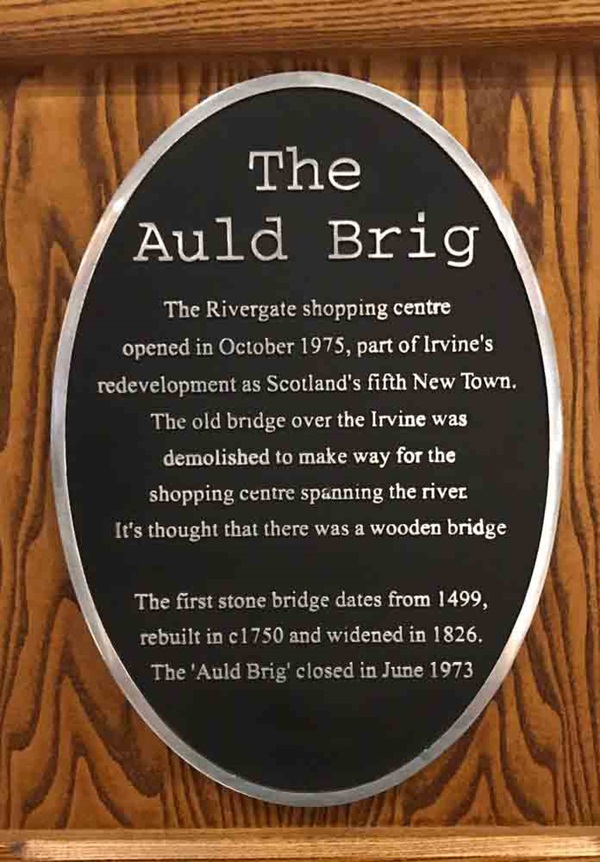
The plaque reads: The Rivergate shopping centre opened in October 1975, part of Irvine’s redevelopment as Scotland’s fifth new town.
The old bridge over the Irvine was demolished to make way for the shopping centre spanning the river. It’s thought that there was a wooden bridge.
The first stone bridge dates from 1499, rebuilt in c1750 and widened in 1826. The ‘Auld Brig’ closed in June 1973.
An illustration and text about the Irvine Carters Society.
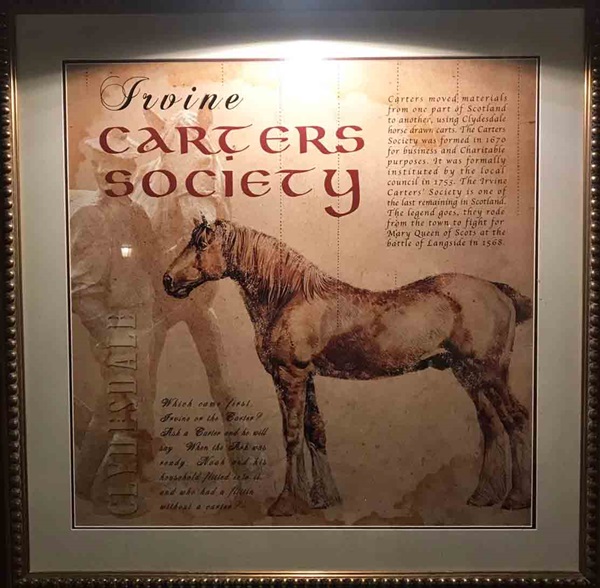
The text reads: Carters moved materials from one part of Scotland to another, using Clydesdale horse drawn carts. The Carters Society was formed in 1670 for business and charitable purposes. It was formally instituted by the local council in 1753. The Irvine Carters Society is one of the last remaining in Scotland. The legend goes, they rode from the town to fight for Mary Queen of Scots at the Battle of Langside in 1568.
An illustration and text about the Marymass festival.
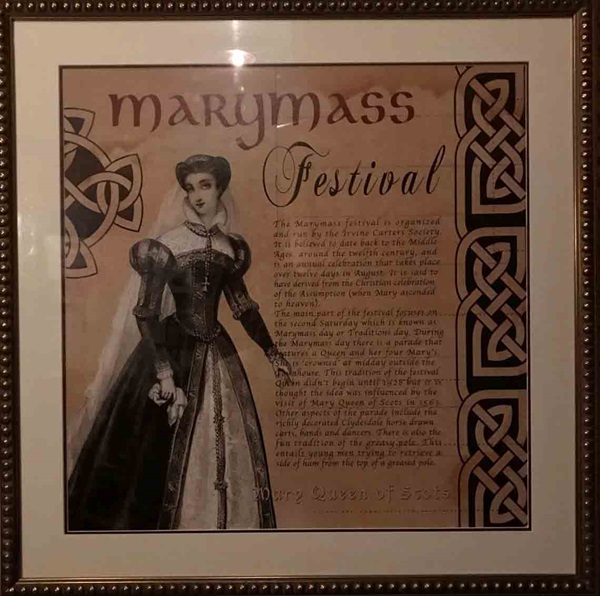
The text reads: The Marymass festival is organised and run by the Irvine Carters Society. It is believed to date back to the Middle Ages, around the twelfth century, and is an annual celebration that takes place over twelve days in August. It is said to have derived from the Christian celebration of the Assumption (when Mary ascended to heaven).
The main part of the festival focuses on the second Saturday which is known as Marymass day or Traditions day. During the Marymass day there is a parade that features a queen and her four Mary’s. She is ‘crowned’ at midday outside the Townhouse. This tradition of the festival queen didn’t begin until 1928 but it is thought the idea was influenced by the visit of Mary Queen of Scots in 1563. Other aspects of the parade include the richly decorated Clydesdale horse drawn carts, bands and dancers. There is also the fun tradition of the greasy pole. This entails young men trying to retrieve a slice of ham from the top of a greased pole.
A photograph and text about the Ayrshire Dockyard Company.
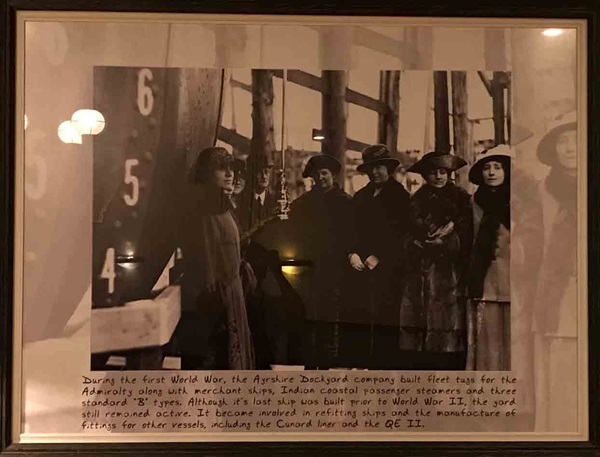
The text reads: During the First World War, the Ayrshire Dockyard Company built fleet tugs for the admiralty along with merchant ships, Indian coastal passenger steamers and three standard 'B' types. Although its last ship was built prior to World War II, the yard still remained active. It became involved in refitting ships and the manufacture of fittings for other vessels, including the Cunard liner and the QE II.
A photograph and text about Irvine harbour.
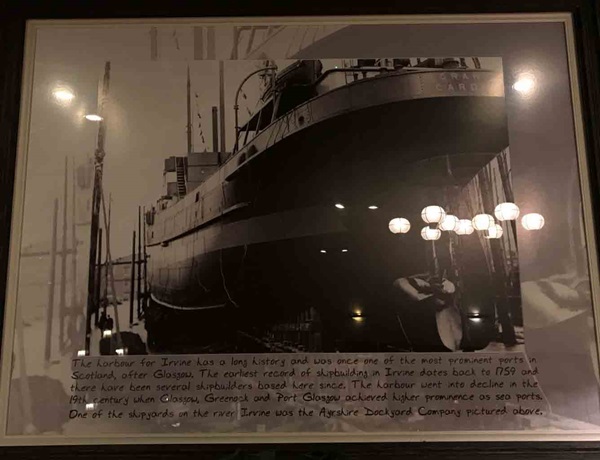
The text reads: The harbour for Irvine has a long history and was once one of the most prominent ports in Scotland, after Glasgow. The earliest record of shipbuilding in Irvine dates back to 1759 and there have been several shipbuilders based here since. The harbour went into decline in the 19th century when Glasgow, Greenock and Port Glasgow achieved higher prominence as sea ports. One of the shipyards on the river Irvine was the Ayrshire Dockyard Company pictured above.
An art installation entitled Ropey Installation.
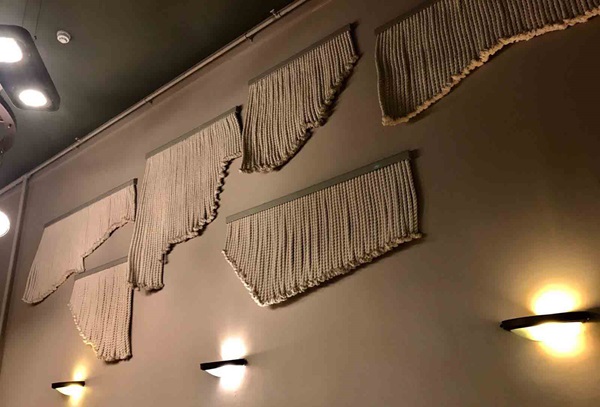
The inspiration for this piece was taken from Irvine’s coastal and maritime links. It has been made from natural cotton rope.
Natural landscape art pieces.
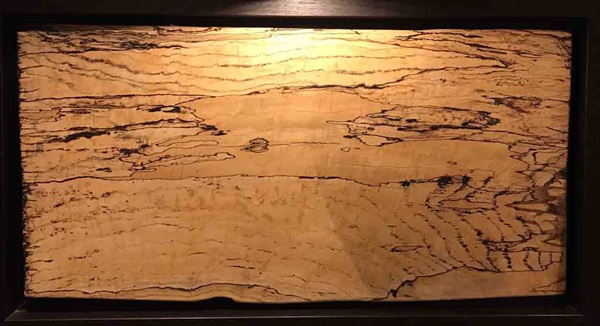
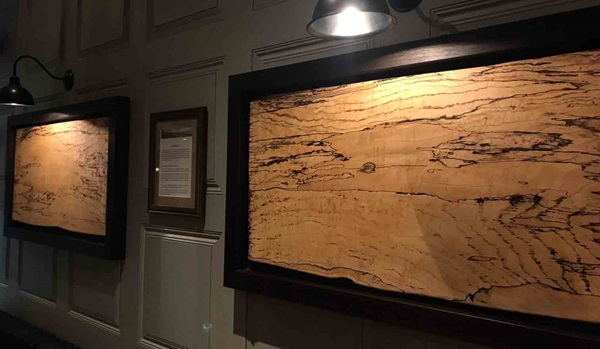
The two natural landscape art pieces you see here, took their inspiration from the coastline of Irvine. The panels are slices of spalted Ash from a tree that would have been in between one hundred and fifty and two hundred years old. The lines that form part of the landscapes are created by the spalting process, which is where different fungal colonies attack the wood and create these lines.
The Ayrshire coastal path runs from Glenapp to Shelmorlie. Its route takes you along some of the most beautiful panoramic coastline.
Part of the route runs through Irvine, along which you would find various sea and shore birds. Examples of just a few of the many species include Curfew Sandpipers, Greenshank, Golden Plover and Black-tailed Godwit. Some rare sightings include Marsh Barriers, American Widgeon and Avocet.
If you were at the harbour mouth looking into Irvine Bay you may see Turns, Eider Sucks, Shag, Manx Shearwater and Gannet.
In 2009 ASPB Scotland acquired a new reserve in an area of the bogside flats site of special interest. This is situated between the railway and the River Irvine.
A sculpture entitled Heavyweight.
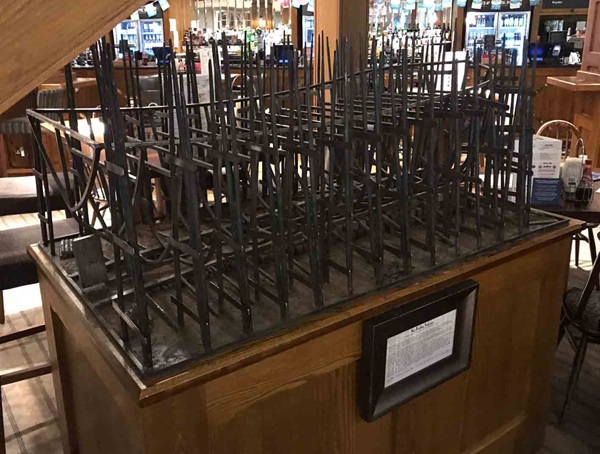
The artist took his inspiration for Heavyweight from the history of shipbuilding in Irvine. It depicts the wooden scaffolding around the ship and the skeleton of the ship being built. It has been hand forged out of mild steel and weighs in excess of 100 kilos.
The Ayrshire Dockyard Company was formed in 1888. When Mackie and Thompson sold their old Govan yard to Harland and Wolff in 1912, part of the deal was that a four-ship contract would be given to them to build at their new six-berth yard in Irvine.
During the First World War the yard built fleet tugs for the admiralty along with merchant ships, Indian coastal passenger steamers and three standard ‘B’ types were completed.
The main customers of the yard were Clan Line Steamers and from 1919 to 1928 they built 25 ships. In 1928 the yard was bought by Lithgows. A couple of tramps were completed and production started on others, but work came to a halt when the Depression hit the ship building industry.
There was no ship building in 1933 and manufacturing only picked up from 1936 onwards. Soon after, the yard was purchased by National Shipbuilders Security. The yards main function became that of repairer, which it continued throughout the 1940s and 1950s.
All images of Ayrshire Dockyard Company were kindly supplied by The Scottish Maritime Museum, Irvine.
External photograph of the building – main entrance.
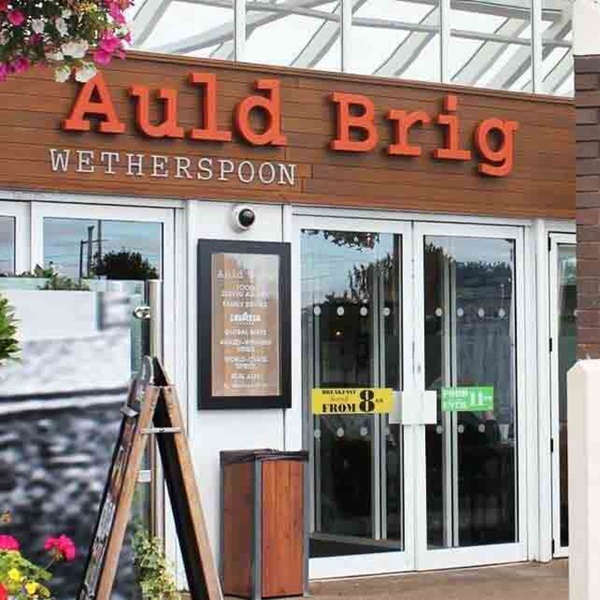
If you have information on the history of this pub, then we’d like you to share it with us. Please e-mail all information to: pubhistories@jdwetherspoon.co.uk